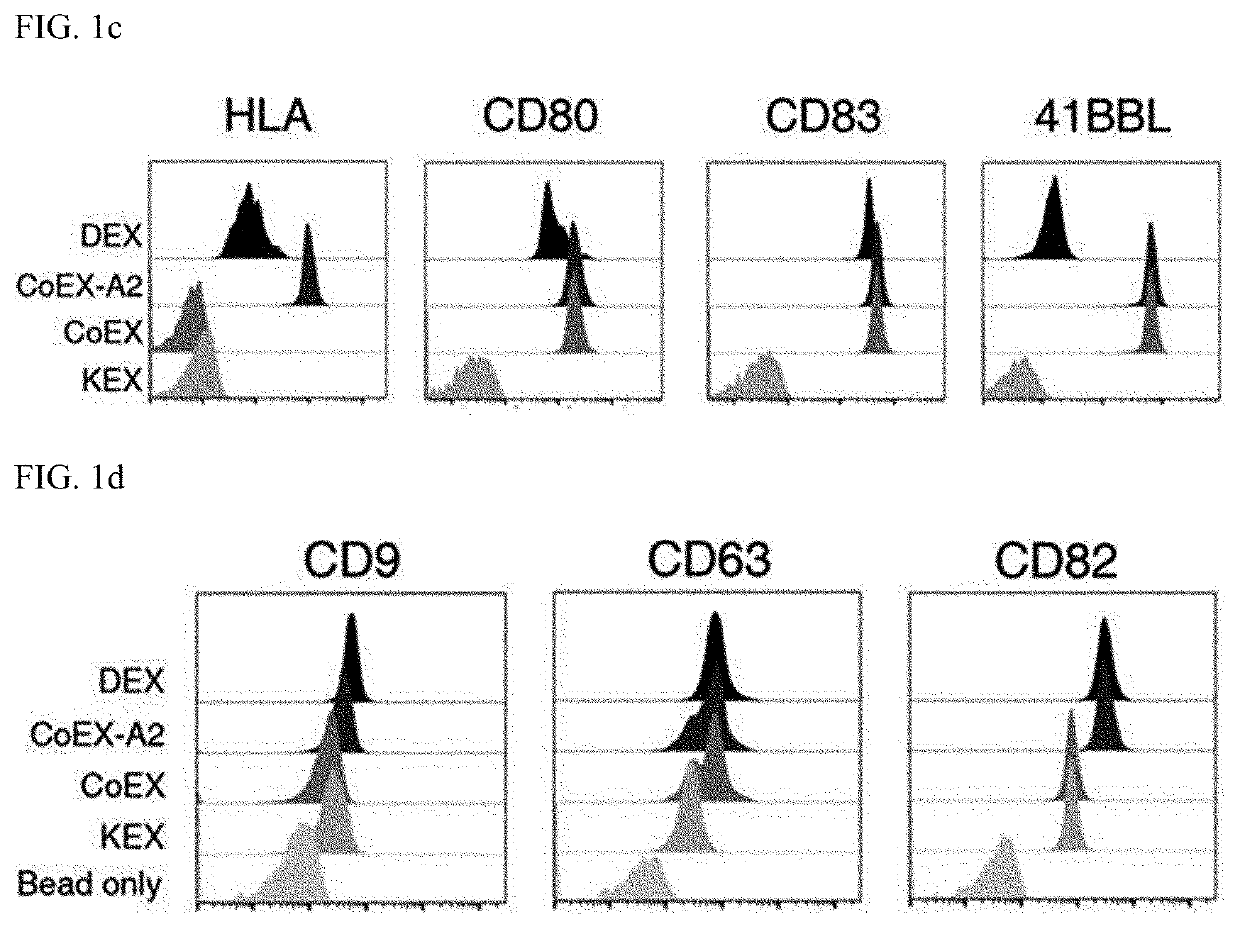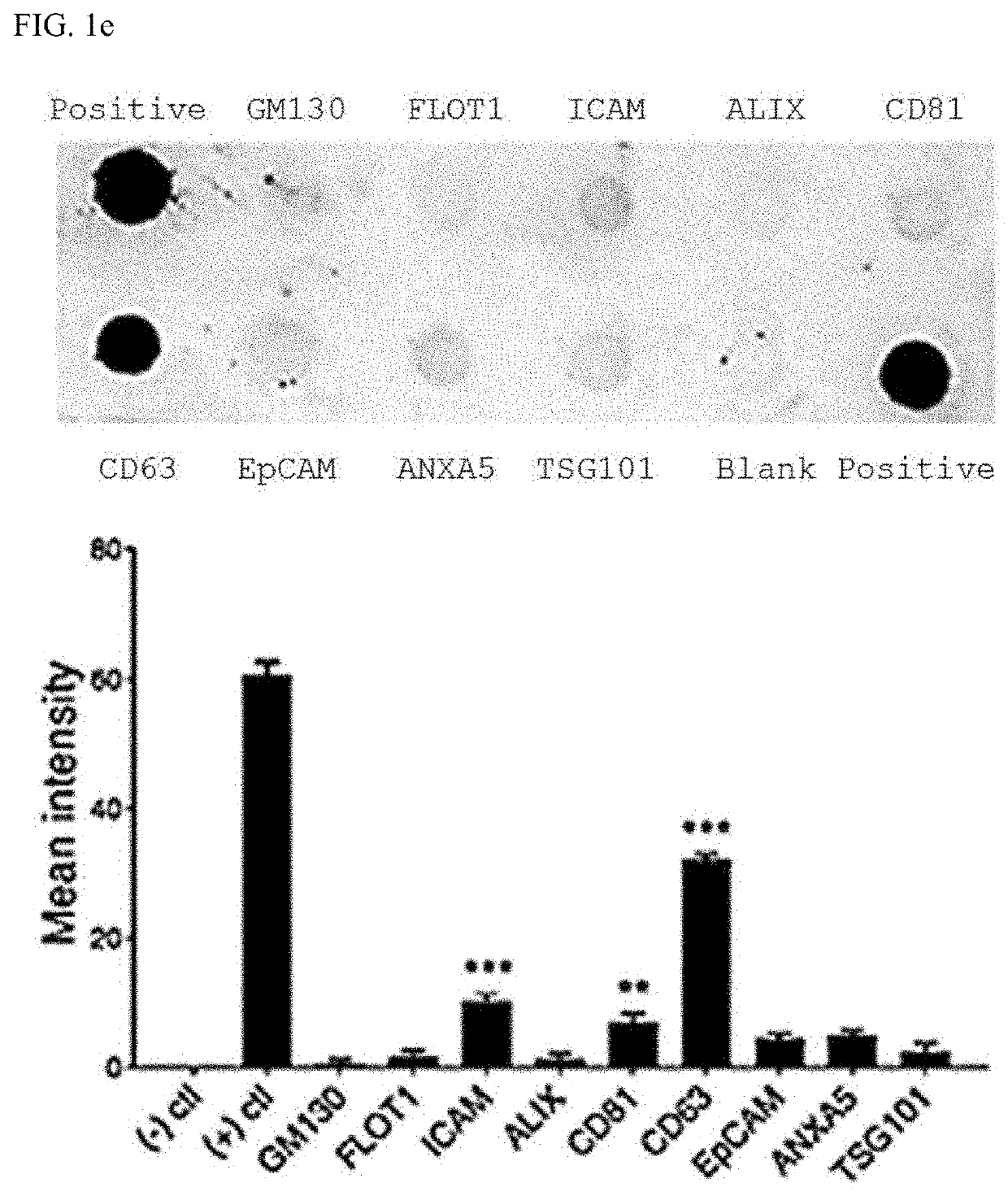Exosome for stimulating t cell and pharmaceutical use thereof
a technology of exosomes and t cells, applied in the direction of genetically modified cells, immunological disorders, antibody medical ingredients, etc., can solve the problem of limiting the generation of sufficient dexs from autologous dcs
- Summary
- Abstract
- Description
- Claims
- Application Information
AI Technical Summary
Benefits of technology
Problems solved by technology
Method used
Image
Examples
examples
Preparation of Exosome
[0067](Cells)
[0068]The use of human materials was reviewed and approved by the Institutional Review Board of College of Medicine of the Catholic University of Korea. PBLs were collected from healthy volunteers by using Ficoll-Hypaque (GE Healthcare, Pittsburgh, Pa., USA). K562 cell lines were obtained from the American Type Culture Collection (Manassas, Va., USA). All of the cell lines were cultured as recommended by the provider.
[0069](Establishment of Artificial APCs)
[0070]HLA-A2, CD80, 4-1BBL, and CD83 cDNA were individually cloned into a pcDNA 3.1 vector (Invitrogen, Carlsbad, Calif., USA) and sequentially transfected into K562 cells by using the Nucleofector Kit (Lonza, Basel, Switzerland), according to the manufacturer's instructions.
[0071]K 562 cells were transfected with pcDNA3-CD32, capable of being loaded with anti-CD3 antibodies to produce KEX. Moreover, K562 cells were transfected with 4-1BBL, CD80, and CD83 to produce CoEX, respectively. Here, CoE...
PUM
| Property | Measurement | Unit |
|---|---|---|
| Magnetic field | aaaaa | aaaaa |
| Cytotoxicity | aaaaa | aaaaa |
Abstract
Description
Claims
Application Information
 Login to View More
Login to View More - R&D
- Intellectual Property
- Life Sciences
- Materials
- Tech Scout
- Unparalleled Data Quality
- Higher Quality Content
- 60% Fewer Hallucinations
Browse by: Latest US Patents, China's latest patents, Technical Efficacy Thesaurus, Application Domain, Technology Topic, Popular Technical Reports.
© 2025 PatSnap. All rights reserved.Legal|Privacy policy|Modern Slavery Act Transparency Statement|Sitemap|About US| Contact US: help@patsnap.com



